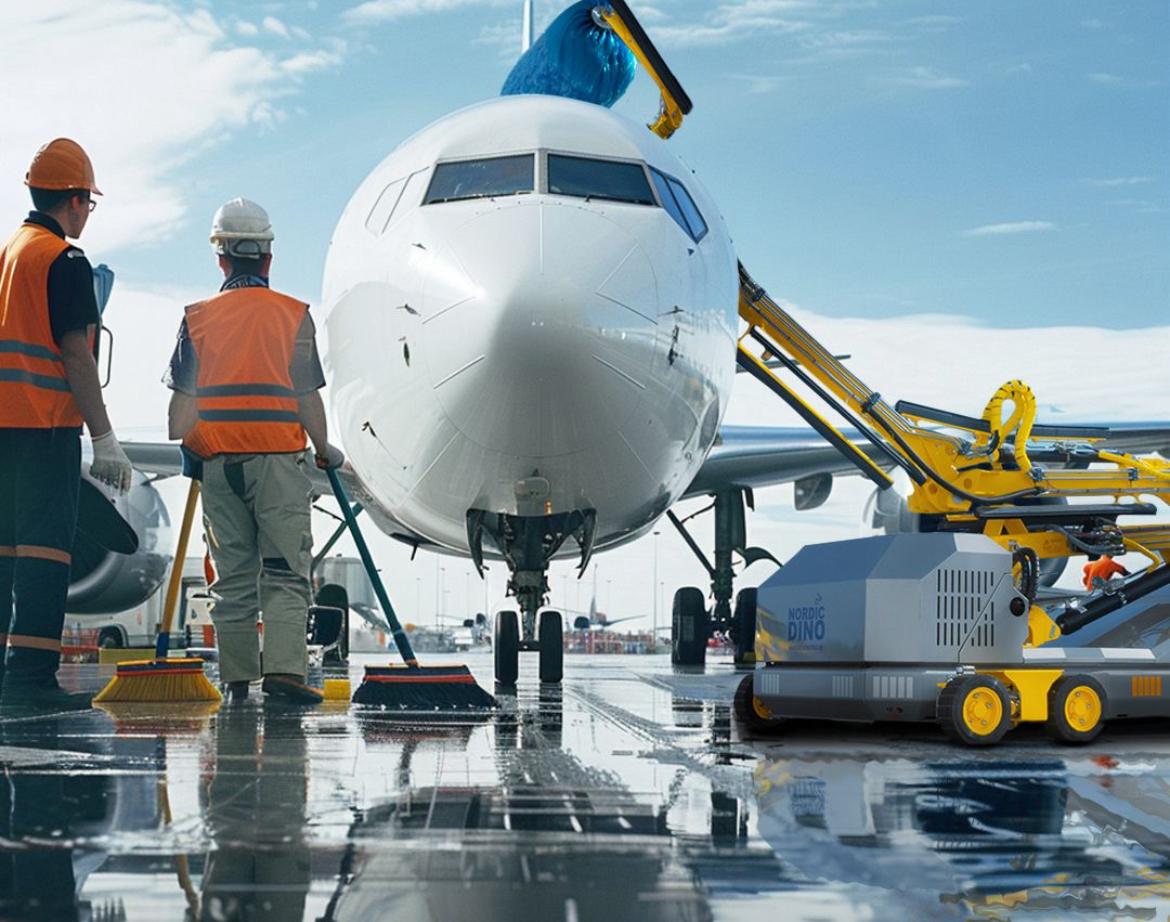The image of a person in a white T-shirt giving their car a nice sponge bath in their driveway feels like something from the 1950s. The rise and ubiquity of self-service contactless car washes and recently express tunnel car washes made old ways obsolete. Using the latest equipment means that car owners save time, money, and can take better care of their cars. Is this the same case for aircraft? Nordic Dino Robotics AB CCO Veronika Andrianovaite could not agree more:
“When we look at the history of aircraft washing, it is hard not to see parallels with the way that the processes, and indeed, the perspectives on automotive cleaning have changed over the years. We can say that in many ways, the developments in these respective fields have gone hand in hand.”
In its early days, aircraft washing, like car washing, was very much a manual activity. The large difference, of course, being that the manpower required for even the most superficial of aircraft washes was huge. Nevertheless, both modes of transport shared the same basic tools, the human hand. This method remained a constant from the early part of the twentieth century until the 1950s.
Automation, although very much in its infancy, began to come into its own in the 1950s with the invention and introduction of fully automated car washes in the 1940s and 1950s, specifically in the US. And this innovation was soon to find its way into the aviation industry also. However, unlike the automotive world, where cleaning was mainly addressed as a cosmetic and aesthetic concern, for aviation, cleaning was also an issue of maintenance and the upkeep of industry-compliant standards. Not only that, the introduction of automated processes also helped reduce the time an aircraft was grounded during clean-up.
That brings us to today. It should come as no surprise that presently aircraft cleaning is far more technologically advanced than it has ever been. Aircraft-washing robots like the Nordic Dino, which saw its first iteration released all the way back in 1981, have led the charge. The latter robot has experienced several upgrades over the years, touching on elements such as sensors, controls and computer systems, as well as innovations in brush technology. Veronika Andrianovaite, the CCO of Nordic Dino Robotics AB, is quick to point out the many benefits that having a dependable, robust, and high-performance robot can make to the once time-intensive job of aviation cleaning.
“The shift towards using robotics has dramatically improved the efficiency and safety of aircraft washing. Having an automated cleaning solution not only means you need to allocate fewer man hours to the job, and having less ground staff working at great heights to clean the plane is also a huge plus when it comes to safety. It also ensures that you can optimize aircraft paint life and reduce corrosion because you always have optimal cleaning performance. Then there are the sustainability benefits: clean aircraft fly more efficiently, as there is less aerodynamic drag, so there’s less need for fuel, and, of course, there’s the cost-saving benefit.”
Here, again, especially, at the level of sustainability and eco-friendly practices, we find many comparisons with car washing. In that industry too, there is a commitment to lower emissions, enhance overall sustainability practices, and at the most basic level, reduce water use, something which robots like Nordic Dino have achieved great success with.
Typically, cleaning aircraft exteriors with highly pressurized water consumes between 9,500 to 11,300 liters per wash (equivalent to 60 standard-sized bathtubs), presenting a substantial environmental impact. The introduction of robotic cleaning systems like Nordic Dino has dramatically changed this scenario, offering a more eco-friendly solution. These automated systems can save more than 30% of water compared to traditional methods, marking a significant reduction in water use and highlighting the potential for greener operations within the sector.
For Veronika Andrianovaite, this journey towards more sustainable automated solutions is precipitated as much by ideals as it is by technology, as she argues: “The evolution isn’t just technological; it’s also a change in mindset towards more eco-friendly practices.”
Indeed, these innovations are part of a broader, all-encompassing move towards greener practices, something that we can see shared across many industries. These practices are informed by larger governmental policies. Across the EU for example, the Nordic Dino’s premier market, a pledge has been made to cut greenhouse gas emissions by 55% by 2030, with the even more ambitious target of becoming climate neutral by 2050.
The trajectory of aircraft washing, from manual methods to sophisticated robotics, reflects a broader commitment to innovation, safety, and environmental stewardship. As technology continues to advance, the aviation industry, much like its automotive counterpart, is set to achieve greater efficiencies, fostering a cleaner, safer, and more sustainable future.
